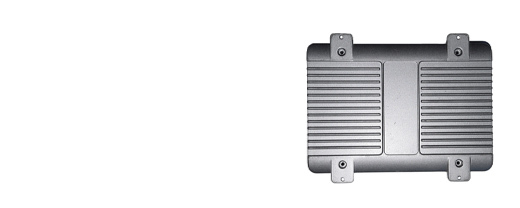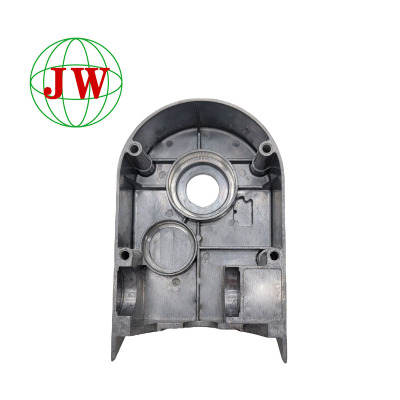
Aluminum Furniture Connectors: How Die-Casting Molds & Alloy Components Elevate Modern Home Design
2025-08-22 15:30
In the fast-evolving world of furniture manufacturing,aluminum furniture connectors have emerged as a silent revolution, solving long-standing pain points of instability, rust, and clunky aesthetics in assembled furniture. At the core of these high-performance connectors lies two game-changing elements: aluminum alloy die-castings that deliver strength and lightness, and precision die-casting molds that ensure consistency—together, they’re redefining how modular sofas, cabinets, and tables are built, shipped, and used.
Why Aluminum Alloy Die-Castings StandOut for Furniture Connectors
Traditional furniture connectors often rely on plastic (prone to cracking) or steel (heavy and rust-prone), but aluminum alloy die-castings flip these drawbacks. Made from alloys like ADC12 and A380—chosen for their 60% lighter weight than steel and 5x higher impact resistance than plastic—these connectors handle the daily stress of furniture use: from the repeated opening of cabinet doors to the weight of users on modular sofas.
The die-casting process is key to their performance. By injecting molten aluminum (heated to 650–700°C) into precision molds under 8,000–12,000 psi pressure, manufacturers create connectors with intricate details: think threaded inserts for easy assembly, hollow cores to cut weight, and interlocking grooves that lock furniture parts tightly. Unlike welded steel parts, aluminum die-cast connectors have no weak joints, and their smooth surfaces eliminate the need for post-processing—saving manufacturers time and cost.
A 2024 study by the Global Furniture Hardware Association found that furniture using aluminum die-cast connectors had a 40% lower repair rate over 5 years compared to those with plastic or steel alternatives. “These connectors don’t warp in humid bathrooms or rust in coastal homes,” says Li Mei, a furniture designer at a leading Chinese brand. “They’re the reason we can now make modular furniture that’s both durable and easy to ship.”
The Unsung Role of Die-Casting Molds in Connector Quality
Behind every reliable aluminum furniture connector is a high-grade die-casting mold. These molds—typically made from H13 tool steel, which resists 500°C+ temperatures and lasts 80,000+ production cycles—are engineered to replicate connector designs with ±0.03mm tolerance. For furniture, this precision is non-negotiable: a misaligned mold could produce connectors that leave gaps between cabinet panels or make sofa frames wobbly.
Modern die-casting molds for furniture connectors also integrate smart features. 3D-printed mold inserts with internal cooling channels speed up aluminum solidification by 25%, cutting production time from 15 seconds per connector to 11 seconds. Mold designers also add “self-cleaning” cavities to prevent aluminum residue buildup, which ensures every connector has the same smooth finish—critical for furniture that prioritizes aesthetics.
“Our molds are tested 100+ times with simulation software before production,” explains Zhang Wei, a mold engineer at a Foshan-based manufacturer. “We check how molten aluminum flows to avoid air bubbles—even a tiny bubble in a connector could cause it to break under pressure. That’s why a good mold isn’t an expense; it’s a guarantee of consistent quality.”
Market Growth Driven by Modular and Sustainable Furniture Trends
The global aluminum furniture connector market is booming, fueled by two key trends: modular furniture and sustainability. As urban living spaces shrink, consumers are choosing modular sofas, cabinets, and tables that can be rearranged—all of which rely on aluminum die-cast connectors to stay stable. Meanwhile, aluminum’s 100% recyclability aligns with eco-friendly furniture demands: 70% of leading brands now use recycled aluminum in their die-cast connectors, cutting carbon emissions by 95% compared to using raw aluminum.
Data from Market Research Future shows the market will grow from $1.2 billion in 2023 to $1.8 billion by 2030, with Asia-Pacific leading the charge. Chinese manufacturers, in particular, are innovating: some now offer custom die-casting molds for unique connector designs, allowing furniture brands to create one-of-a-kind modular pieces.
“Five years ago, clients only asked for basic connectors,” says Wang Tao, sales director at an aluminum die-casting firm. “Now they want connectors that match their furniture’s color or have hidden designs. Our ability to make custom molds quickly—thanks to 3D printing—lets us meet those needs.”
Future Innovations: Smarter Connectors, Smarter Molds
The next frontier for aluminum furniture connectors lies in smart technology and mold advancement. Some manufacturers are testing connectors with embedded sensors that alert users when parts loosen—perfect for busy households. Meanwhile, AI-powered die-casting molds are being developed to self-adjust pressure and temperature during production, reducing defects to less than 0.3%.
Nanocoatings are also set to improve connector durability: a thin ceramic coating on aluminum die-cast connectors can boost scratch resistance by 60%, making them ideal for kids’ furniture. “We’re not just making connectors—we’re making furniture that lasts longer and adapts to users’ lives,” adds Wang Tao.
Conclusion
Aluminum furniture connectors may be small, but their impact on modern furniture is huge. By combining the strength of aluminum alloy die-castings with the precision of advanced die-casting molds, they’re enabling furniture that’s durable, sustainable, and flexible. As consumers and brands alike prioritize quality and versatility, these connectors—and the molds that make them—will remain essential to the future of home design. In a world where furniture needs to work harder, aluminum die-cast connectors are proving that the best solutions often come in the smallest packages.
Get the latest price? We'll respond as soon as possible(within 12 hours)












